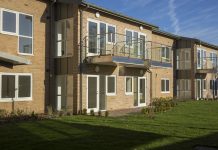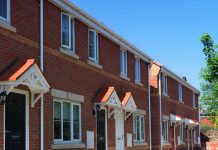Jean Hewitt, Director of the Centre for Accessible Environments returns to the subject of accessible housing standards and how easy it is to confuse the categories
The technical detail of building standards and regulations rarely makes the headlines. Yet the impact that inaccessible environments have on people’s daily lives, health, employment prospects, independence, and life chances is vast. This is particularly true of dwellings, where there is currently a lot of confusion around standards over what should be applied and what they really mean.
No-one is in any doubt that this country needs to build more homes and the new national technical access standards in England, incorporated into the building regulations for the first time last October was widely applauded. It is hoped that developers, planners and local authorities will take the option to increase the supply of accessible homes. This is vital if we are to meet housing needs both now and in the future.
While it’s too early to fully assess the impact in practice, the feedback we’re receiving from a range of professionals reveals inconsistent interpretation, which is a major concern.
How do we know this? Our accessible housing training courses attract delegates from a variety of fields and differing experience levels trying to get to grips with the new Building Regulation Approved Document M4 Categories 1, 2 and 3. From architects to planners, building control officers to surveyors and occupational therapists to product manufacturers, there is a fundamental misunderstanding about what the standards mean. When even experienced players in core sectors are interpreting the standards differently to one another, you realise there is a problem. We have been able to help delegates on our courses, but our concern is that this appears to be representative of widespread uncertainty, with the potential to exacerbate the significant shortage of accessible housing being built across the country.
So what do the categories mean, and why is it confusing?
Category 1
The default M4 Category 1 is described as ‘visitable dwellings’. To the uninitiated this is a rather vague label for a specific technical housing standard and ‘visitable’ is open to interpretation.
In reality, Category 1 is the standard contained within the earlier Building Regulations, and it provides a very minimal level of access without future-proofing for future adaptations. If no category is included in the Local Plan AND specified within the planning permission by the planning authority, then Category 1 is the default standard which will apply.
Category 1 is not sufficiently accessible for most older and disabled people, and it is only ‘vistable’ in the loosest sense. Yes, a wheelchair user may be able to get through the front door but could struggle to access internal rooms or use a toilet or washing facilities for example. It would have to be a short and potentially uncomfortable visit and certainly not an overnight stay. This ‘visitable’ label is causing confusion and, worryingly, it is being interpreted by some built environment professionals as a higher accessibility standard than it actually is. Homes built to this basic standard have no flexibility for change.
Add to this the pressing need for local authorities to have a local plan in place by 2017 for their housing development, and there is a risk that inconsistencies could soon be enshrined by councils across England to the detriment of local people. While Greater London has applied a common approach through the London Plan, local plans elsewhere could potentially be very different regarding which access categories apply. This could create a postcode lottery on the supply of accessible housing in different areas, compounded by the confusion over labelling of the level of accessibility.
Category 2
M4 Category 2 is broadly equivalent to the Lifetime Homes standard – the accessible default in London since 2004 under successive mayoral administrations and committed to by the new Mayor of London too. Lifetime Homes are regulated for in Wales, Scotland and Northern Ireland to varying degrees (which adds another layer of complexity for UK wide professionals). Many people are consequently already referring to the Category 2 standard as Lifetime Homes since this term is more readily understood, although there are differences.
We hope everyone understands why the Category 2 default in London would be the best option throughout England. It gives true ‘visitability’, as well as the potential to adapt and change over the course of a lifetime – from people with young children to older and disabled people and even someone trying to get a decent size sofa into their home. Better quality homes can make a difference to the lives of so many and with so many homes needed, surely it matters that these are fit for purpose over the course of our lives. In March 2016, the House of Lord’s Select Committee on the Equality Act and Disability made such a recommendation.
Category 3
There’s further confusion between Category 2: Accessible and adaptable dwellings and Category 3: Wheelchair user dwellings, with its two sub-categories of ‘wheelchair adaptable’ and ‘wheelchair accessible’. The use of the same terms for both categories is adding to challenges with the interpretation and application of the standards. This is very worrying, as it could potentially result in the loss of wheelchair accessible units, not through intent, but through confusion over language.
Finally, it’s not clear from reading the regulations that there is no difference in the overall property footprint required for an ‘adaptable’ and an ‘accessible’ wheelchair user-dwelling, even though designers seem to expect differing spatial requirements. Designs also need to show how the accessible standard is met and which select features can be adjusted for the adaptable version.
Oh, and that’s just in England. Scotland, Wales and Northern Ireland have different standards!
For more information on CAE training courses see cae.org.uk/training/
For a concise comparison between Lifetime Homes standard and Part M(4) Category 2 see www.habinteg.org.uk/accessible-housing-standards
. . . . . . . . . . . . . . . . . . . . . . . . . . . . . . . . . . . . . . . . . . . . . . .
Jean Hewitt
Director
Centre for Accessible Environments
Tel: 020 7822 8232
info@cae.org.uk
cae.org.uk











